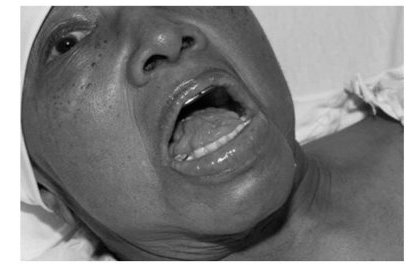Communication is at the heart of how we connect with others, but for some people, speaking clearly can be a real challenge. Imagine trying to express yourself, only to have your words come out too soft, too fast, or too slurred for others to understand. This isn’t just a matter of personal style—it could be a sign of a neurological condition called Dysarthria.
Dysarthria is a speech disorder that occurs when the muscles used for speaking—like those in the face, mouth, and respiratory system—become weak or difficult to control. According to the Mayo Clinic, this condition often stems from nerve damage, muscle paralysis, or even certain medications that interfere with muscle function. When these muscles don’t work properly, it can lead to speech that’s hard to understand. The root cause of Dysarthria is usually nerve dysfunction, which disrupts the coordination of the tongue, vocal cords, and throat muscles.
It can also be linked to neurological diseases or brain injuries. While some people may see improvement with therapy, others may face long-term challenges, especially if the brain damage is permanent.
People with Dysarthria often struggle with speech in noticeable ways. Some common symptoms include speaking so softly that it sounds like a whisper, making it hard for others to hear, or slurring or distorting words, which makes speech unclear. Others might talk too loudly in an attempt to be understood or speak too quickly, leaving listeners struggling to keep up.
Some individuals may have a monotone voice or be unable to control pitch and tone, while others might put too much effort into speaking, making their speech sound strained. In some cases, weak throat muscles can produce a nasal-sounding voice. Because Dysarthria makes communication difficult, many people with the condition may feel embarrassed or frustrated. This can lead to social withdrawal, anxiety, or even depression over time.
Dysarthria can develop for a variety of reasons, often tied to underlying health conditions. Some common causes include brain injuries from accidents, strokes, or tumors, which can damage the nerves involved in speech. Cerebral palsy, a condition that affects motor control in children, can also impact speech.
Neurological disorders like Parkinson’s, multiple sclerosis, or ALS (amyotrophic lateral sclerosis) are often linked to Dysarthria, as are brain tumors, which can press on nerves and make it hard to control speech muscles. Additionally, certain medications, especially sedatives or muscle relaxants, can weaken the muscles needed for clear speech.
Dysarthria isn’t a one-size-fits-all condition. It comes in several forms, depending on which part of the brain or nervous system is affected. Flaccid Dysarthria, for example, happens when the lower motor neurons are damaged, disrupting the signals sent to speech muscles. People with this type often have breathy, nasal-sounding speech and struggle with weak articulation.
Spastic Dysarthria, caused by damage to the upper motor neurons, leads to tight, strained speech, often sounding harsh or effortful. Ataxic Dysarthria occurs when the cerebellum—the part of the brain that controls coordination—is affected, resulting in uneven, unsteady speech. Hypokinetic Dysarthria, common in people with Parkinson’s disease, is caused by damage to the basal ganglia, which helps control movement, leading to soft, monotone, or unusually fast speech. Mixed Dysarthria, as the name suggests, combines features of other forms and is often seen in severe neurological conditions like ALS, where multiple speech difficulties occur at once.
While Dysarthria can be a lifelong challenge, there are ways to manage it and improve communication. Treatment depends on the underlying cause and may include speech therapy, which can help strengthen muscles, improve breathing control, and enhance clarity. If medications are causing the issue, adjusting or stopping them might help.
Physical therapy exercises to strengthen facial and throat muscles can also make a big difference. In severe cases, assistive devices that generate speech can help individuals communicate more effectively.
Dysarthria itself isn’t life-threatening, but the conditions that cause it—like brain injuries or neurological diseases—can be serious. That’s why it’s important to seek medical help if you or someone you know is experiencing persistent speech problems. Early diagnosis can lead to better treatment and a higher quality of life.
Dysarthria is more than just a speech disorder—it can affect a person’s confidence, relationships, and overall well-being. While some cases can be managed with therapy, others may require ongoing support. Raising awareness about Dysarthria is key to helping those affected feel understood and supported.
If you or someone you know is struggling with speech difficulties, don’t hesitate to reach out to a healthcare professional. With the right help, communication can improve, and life can become a little easier.














Post Comment